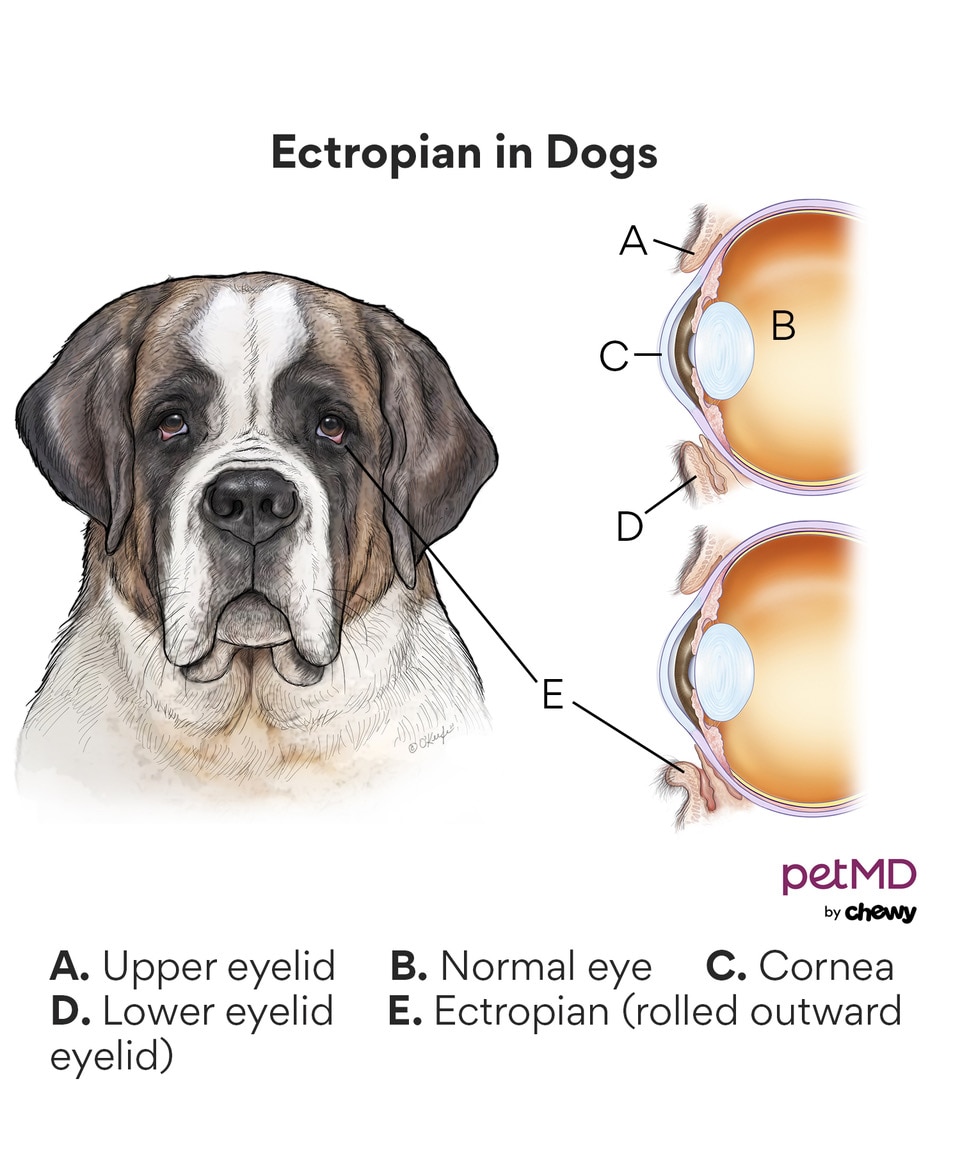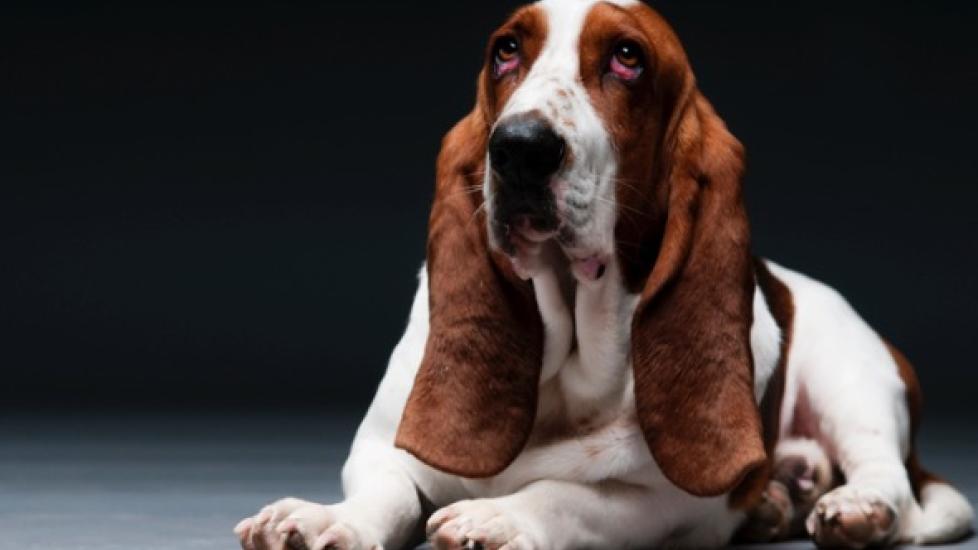Dog Ectropion (Droopy Eye in Dogs)
What Is Dog Ectropion?
Ectropion is when a dog’s eyelid appears like it is sagging away from their eye rather than resting against it. It usually affects the lower eyelid and it causes a “droopy eye” look.
When the lower eyelid stretches and doesn’t rest against the dog’s cornea, it causes chronic irritation and secondary conjunctivitis, or pink eye.
With ectropion, a dog’s eyelids, blink reflex, and tears become unable to perform their normal functions of cleaning, shielding, and lubricating the eye. The loose eyelid exposes the eye to air, dust, bacteria, and stagnant tears. This causes the conjunctival sac to be chronically inflamed, which leads to conjunctivitis.

Symptoms of Dog Ectropion
Symptoms of ectropion in dogs include:
-
Chronic keratitis (inflammation of the cornea)
-
Eye discharge (mucus, pus, or brown or black staining under the eye)
-
Excessive watering of the eye (epiphora)
-
Scleral redness (conjunctivitis)
-
Dry eye (keratoconjunctivitis)
Causes of Dog Ectropion
Ectropion in dogs is primarily a developmental condition that is breed related and presumed to be hereditary. However, secondary ectropion can develop after facial trauma, resulting in facial nerve paralysis. Common causes of acquired secondary ectropion are large eyelid wounds left to heal on their own or other eyelid injuries that cause a dog’s eyelids to droop.
Ectropion only worsens over time because the eyelids lose muscle and become less taut with age. For this reason, have your veterinarian evaluate your dog for treatment options as soon as you observe signs of ectropion.
Dog Breeds That Are Prone to Ectropion
The dog breeds most commonly prone to ectropion are:
-
Coonhound
-
Dogue de Bordeaux
Unfortunately, ectropion is actually a sought-after trait in many commonly affected breeds. It creates a diamond-shaped eye, which gives the dog a devoted and sad expression. This leads some people to breed specifically for ectropion.
How Vets Diagnose Dog Ectropion
Ectropion is diagnosed during a veterinary ophthalmologic examination of your pet’s eyes and eyelids. Your pet does not need to be sedated. In fact, pets should be awake for the veterinarian to appropriately determine their natural eyelid conformation, or shape.
Treatment for Dog Ectropion
Surgery is the only effective way to treat ectropion in dogs. This involves primarily shortening and tightening the eyelid. Surgery provides a normal lower eyelid length that’s positioned properly in relation to the cornea.
Recovery and Management of Dog Ectropion
Recovery from ectropion surgery is rapid. Eyelid swelling will peak approximately 24 hours following surgery and can take two to four weeks to completely resolve. Dogs will be required to wear an Elizabethan collar following surgery to protect the sutures around their eyes.
Topical eye medications may be prescribed after surgery depending on possible underlying corneal or lacrimal disease(s). Oral antibiotics, anti-inflammatories, and analgesics are often recommended after surgery as well.
Sutures from ectropion surgery are removed 14 days after surgery, and the Elizabethan collar can be removed a few days after that.
While surgical complications from ectropion surgery are rare, they can include:
-
Under-correction of the eyelid will not resolve the underlying problem and will then require additional surgeries.
-
Overcorrection of the eyelid can actually result in the formation of entropion (when the eyelid grows inward). It causes trauma to the cornea.
-
Self-trauma to the incision site usually occurs if the Elizabethan collar is removed too soon after surgery.
Dog Ectropion (Droopy Eye in Dogs) FAQs
What causes dog ectropion?
Ectropion is caused primarily by a genetic defect in the animal’s hereditary lineage. Acquired cases of ectropion can occur when a dog has a facial injury and sustains neurological damage.
